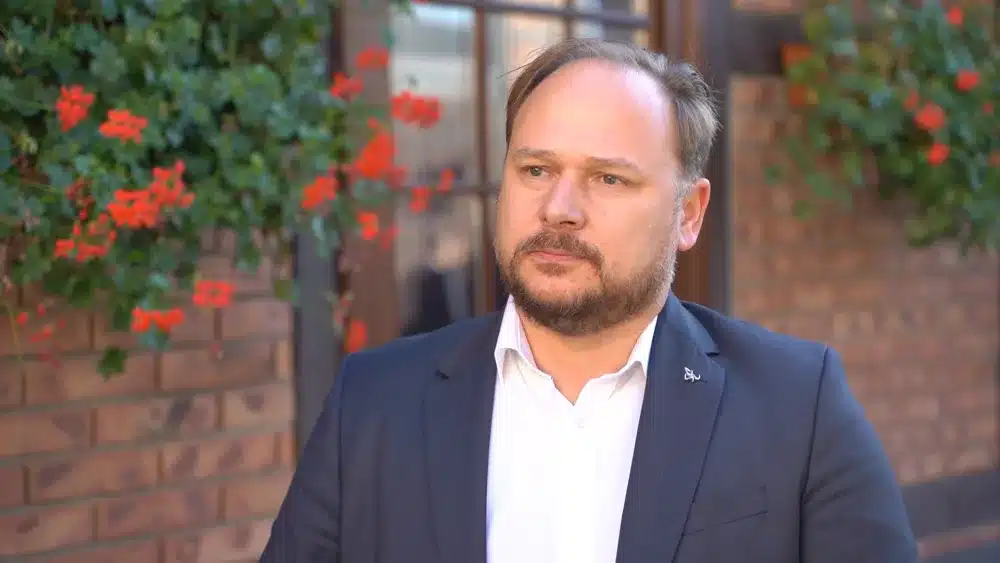Thanks to virtual twin technology, manufacturing processes are becoming more efficient. According to Fortune Business Insights, the global market for such solutions will grow by nearly 40 percent annually to reach around $260 billion by 2032. However, virtual twins can also play a key role in accelerating the achievement of sustainable development goals. The use of this technology allows for the design of products and systems to have the lowest possible carbon footprint and environmental cost, in line with EU climate policy and circular economy principles.
Recycling and reusing resources, components, and products is a general shift in business, driven by carbon neutrality goals and EU regulations aiming to establish a circular economy. The aim is, among other things, to design production processes so that products stay in circulation as long as possible, and can then be easily renovated or recycled. The circular economy is currently one of the most important business megatrends; more and more companies are setting ambitious goals and making specific commitments to minimize the harmful impact of their products. Environmentally, this brings great benefits, including in the form of reducing greenhouse gas emissions and reducing the amount of waste generated.
“Reuse and product repairability are key today. We see a trend where manufacturers no longer think as they did a few years ago, to produce unrepairable products as quickly as possible. Today, when planning a product, they try to focus on making it repairable, to extend its life cycle. However, the reuse of products and components is a huge area where a lot can be saved from the process side, but it can also impact the environment,” – says Ireneusz Borowski, Poland’s country manager at Dassault Systèmes.
The right to repair directive, which came into effect this year, aims to encourage more sustainable consumption and reduce waste by facilitating the repair of broken devices and supporting the repair sector. The European Parliament points out that throwing away repairable goods generates 35 million tonnes of waste annually in the EU. Sellers will be required to prioritize repair during the warranty period if it is cheaper than replacing the product or costs the same. After the repair of the product, the warranty period will be extended by one year.
From the perspective of companies, the circular economy means tangible financial benefits, resulting, among other things, from savings on raw materials and materials. According to data cited by the European Commission, manufacturing companies in the EU spend on average about 40 percent of their resources on them. Therefore, transitioning to a circular economy can help them cut costs, while increasing profitability and protecting them from resource price fluctuations. As the European Parliament reports, total circularity could bring EU companies annual savings of up to 600 billion euros.
“We have many LCA-class solutions, thanks to which our users and customers can directly investigate the impact their product has on the environment – starting from materials, through the production process and logistics, to distribution, and ending with recycling. As a result, the entire production process is responsible, controlled, and can influence all its parameters,” adds the expert.
One of Dassault Systèmes’ flagship solutions is the 3DEXPERIENCE platform, which allows the development and testing of virtual twins of not only single products but complex systems, from cars to whole cities and banking systems. This technology is used by many companies from various industries, including automotive, aviation, and energy sectors.
The digital twin technology that makes production not only more sustainable but also more efficient. In simple terms, it is based on the design of a 3D model that is a virtual representation of an object existing in the real world, precisely reflecting its shape, dimensions, physical properties, and other unique features. Then, tests and simulations are conducted on this virtual model, showing how a given product will behave during assembly, use, or when exposed to various factors.
According to the report “The Key Role of Virtual Twins in Sustainable Development”, developed by Dassault Systèmes in cooperation with Accenture, this technology could play a key role in achieving the UN Sustainable Development Goals 2030. Its use for “transforming ways of managing products and services throughout their life cycle – from design, through use to decommissioning” – could bring economic benefits of up to $1.3 trillion and simultaneously reduce CO2e emissions by 7.5 Gt by 2030.
This rapid market growth is reflected in a recent Fortune Business Insights report, which found that the global digital twin technology-based market is growing rapidly. In 2023, it was worth just over $12.9 billion, but this figure is expected to reach $17.73 billion this year, and nearly $260 billion by 2032 at an annual growth rate of around 40 percent.
Innovations driving the Polish industry and sustainable production development were discussed by experts at the Green Industry Summit congress, which took place on October 22 in Krakow. Dassault Systèmes was one of the partners of this event.
